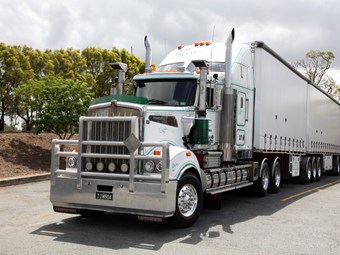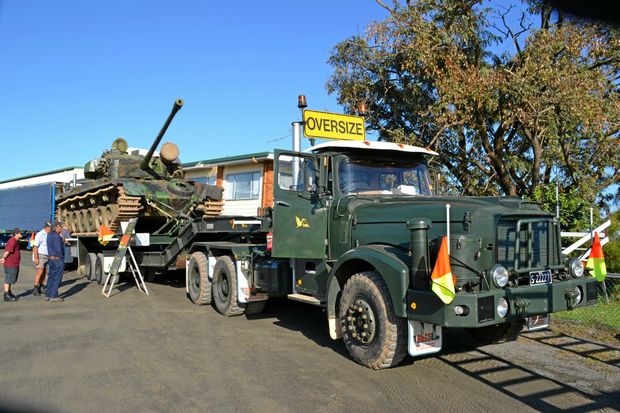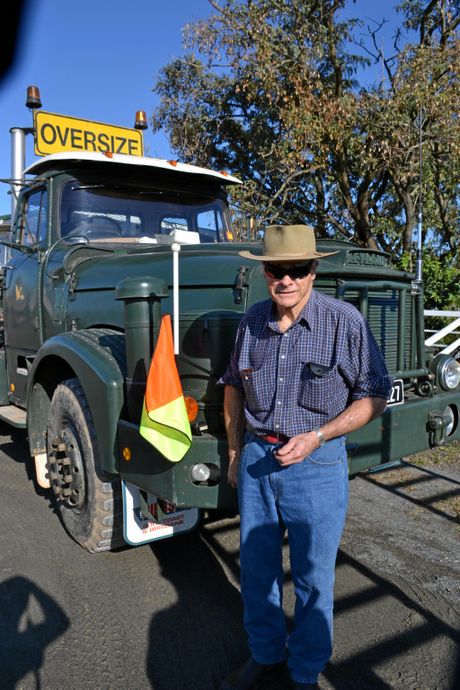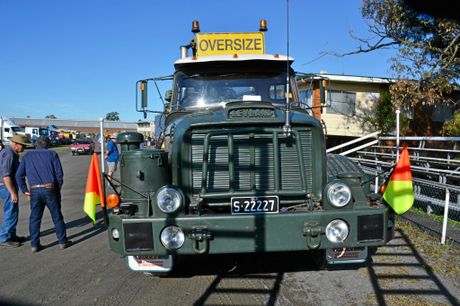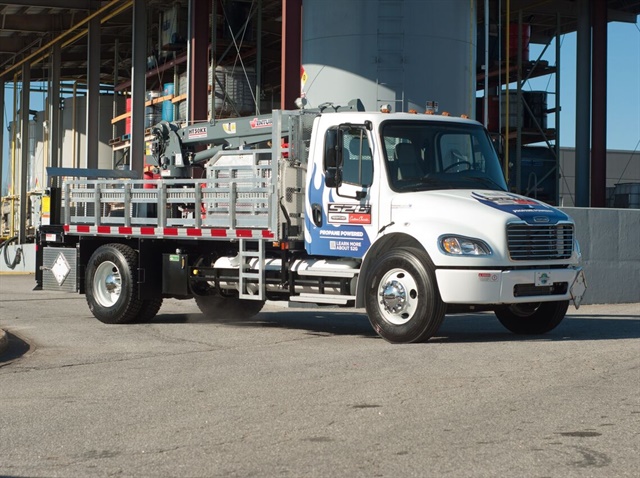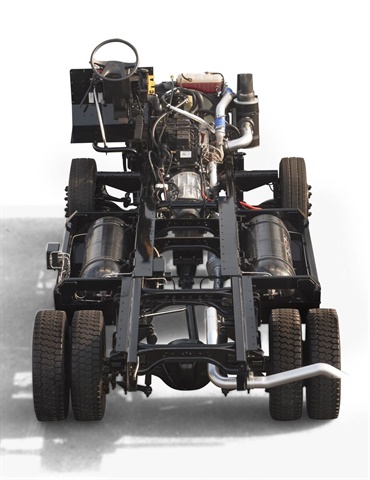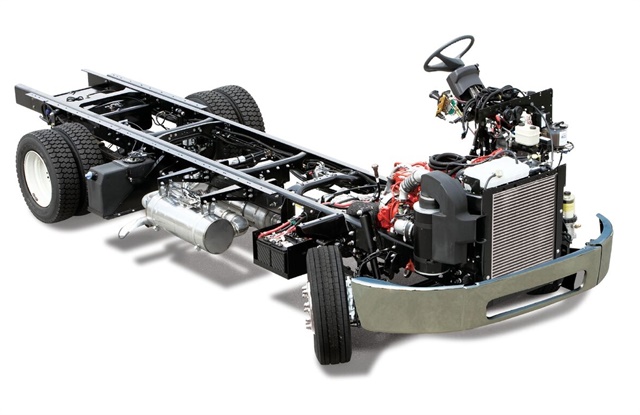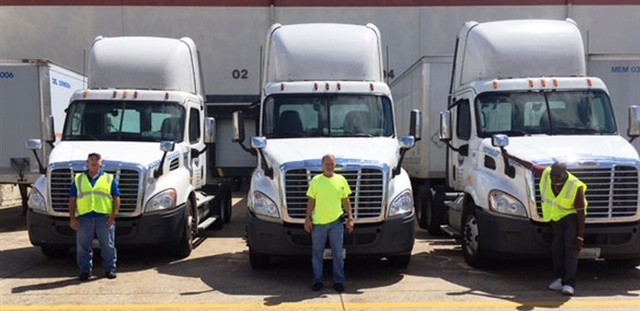
kscarbel2
Moderator-
Posts
18,905 -
Joined
-
Days Won
114
Content Type
Profiles
Forums
Gallery
Events
Blogs
BMT Wiki
Collections
Store
Everything posted by kscarbel2
-
If the shareholders of Volvo Group have the Mack brand in their long term plans (?), I would dispense with the present Mack brand leadership and attempt a dynamic new business model (Volvo has nothing to lose). Calling a spade a spade, the state of Mack brand management has been bleak for years, resulting in the entire distributor body being disgusted and disillusioned. Mack has never been run right since Volvo took over. A handful of Mack veterans tried to hang in there, like Kevin Flaherty and Paul Vikner, but their hands were always tied. Denny Slagle* has been the president of Mack since 2008. For nine years, he has failed to return the Mack brand to greatness. The portfolio has never been smaller and sales are stagnant. The Mack brand ranks 6th because it is no longer competitive. Frequent job changer Jonathan Randall is a waste of time. An unqualified Stephen Roy, appointed President of North American Sales & Marketing in 2014, was quickly demoted to watching over Volvo's "uptime" unit. Paraphrasing what Zenon C.R. Hansen said in 1965, Volvo needs to dispense with its unqualified Mack brand management and get others who know something about trucks. ------------------------------------------------ Faced with a total lack of experienced leadership at Mack brand corporate, I suggest Martin Lundstedt reach out to the real North American Mack experts who actually know what's going on. I propose he orchestrate an agreement under which the “Mack Distributor Council” would run the Mack brand. The Mack Distributor Council is composed of the nation’s most savvy Mack distributor principals, people with decades of knowledge and experience. Volvo will never understand the Mack brand and its customer base in the intimate way that they do. Only the members of the Mack Distributor Council know how to unleash the value of the Mack brand. The Mack Distributor Council includes those listed below and many other distinguished individuals: Jim Bland Transource Brian and Chris Bruckner Bruckner Truck Sales Russ Ellett Virginia Truck Center Terry Dotson and Scott Blevins Worldwide Equipment Jim and Rod Maddox Tri-state Truck Center Jon Pritchett NexTran John and Matt Niebauer W.W. Engine and Supply Steve and Scott Parker Baltimore-Potomac Truck Group Nobody is going to make better decisions than the people whose livelihoods depend on the continued success of the Mack brand. The members of the Mack Distributor Council will forget more about Mack than the present individuals in Greensboro will ever know. ------------------------------------------------ * Background - Dennis R. Slagle 1976 – Graduated from West Virginia Wesleyan College with a Bachelor of Science degree ? - Joined Price Waterhouse. 1980 - 1989 Joined the US arm of construction and agriculture machinery maker JCB as chief financial officer 1989 - 1991 Became JCB’s U.S. market vice-president of sales 1991 - 2000 Became president of JCB Inc. (JCB’s U.S. market business unit) 2000 - 2002 Senior vice-president of sales, Volvo Construction Equipment (VCE). 2002 - 2003 President, L.B. Smith 2003 - 2008 President and CEO, Volvo Construction Equipment (VCE). 2008 - 2011 President and CEO, Mack Trucks (succeeding Paul Vikner) 2009 - 2011 President and CEO, North American Trucks unit of Volvo AB 2012 – ? Volvo Group executive vice president for Trucks Sales & Marketing Americas* * Relating to Volvo’s truck business restructuring (http://www.volvogroup.com/group/global/en-gb/newsmedia/pressreleases/_layouts/CWP.Internet.VolvoCom/NewsItem.aspx?News.ItemId=109874) ? - 2/29/2016 President, Volvo Group Trucks Sales North America (removed from the executive board) 3/1/2016 – Present President, Mack Trucks (restored to the new exec board. Demoted to president of Mack, stripped of the Volvo brand, now only responsibility for Mack brand. Former President Stephen Roy demoted to North American Mack sales manager)
-
.
-
So based on what we know, General John R. Allen authorized Army personnel to carry firearms in Afghanistan, and always with a loaded magazine. Or at least, that's my perception.
-
I think the V8 would be right at home in North America. https://www.bigmacktrucks.com/topic/39056-driving-a-scania-is-‘better-than-sex’-truck-enthusiast-claims/#comment-280515
-
Owner-Driver / June 16, 2017 Graeme ‘JD’ Locke knows what he likes and that’s his current steed – a 2007 Kenworth T904. What he’s not keen on is the current state of the transport industry. Peter and Di Schlenk write Graeme Locke, better known as ‘JD’, doesn’t get home too often. He says his official place of residence is Kingaroy, Queensland, because "that’s where my stuff is", but he spends most of his time in a Kenworth T904, driving for Tim North Transport from its base in the Brisbane suburb of Gracemere. JD, whose nickname was arrived at through his and his father Barry’s middle initials, has been in the T904 since September 2016, driving up and down the east coast. It’s a 2007 model with a C15 Cat, 18 speed gearbox and Kenworth air bag rear suspension. JD says it has all the trimmings, making it very liveable. "It’s got an Icepack, cupboards, fridge and TV. I wouldn’t drive anything but a 909," he says. JD has driven all makes and models, including Kenworths from the T401 up to the 909, as well as Volvos, DAFs and Scanias. "But I wouldn’t have anything else but a long wheel base 909. You just can’t beat it." JD was doing containers and general in Sydney before deciding to move north. He’s driven for large companies but is happy to be driving for a company with a fleet of three. "It’s a good truck and Tim’s a good boss," he says. "He’s very meticulous about maintenance, an old fashioned sort of bloke. "He’s more anal about maintenance than I am with cleaning. "It gives you peace of mind because nothing is an issue." Disjointed industry Although JD is happy with the company and the truck, he has more than a thing or two to see about the trucking industry. "I think the industry needs a good kick up the arse," he exclaims. "We are a massive industry with no-one leading it. It’s so disjointed. "We could control the country even if it’s just to get better roads and rates. Unfortunately, nobody has any backbone. "You can’t say things because it might upset someone." JD would like to see a stronger well run union that should have a slush fund from all the membership fees. The funds would be pooled and for example, September 1, every truck will have the keys out for two weeks. "That would wake the country up," he says. "You amalgamate this whole industry as one and you would have something more powerful than anything else in this country." The fact that trucks are limited to 100km/h is another point of annoyance for JD. He believes trucks should be doing 110km/h because "we are the professionals out on the roads every day". "We are up and down the same stretches of bitumen and yet we are harassed. We are fined for spelling mistakes and being five minutes over. "I think it is a disgrace the way we are treated. We are not school kids; we’re driving millions of dollars’ worth of gear on the road as compared to a $20,000 car. "We do 15 times more kilometres a year than a car driver, yet we’re the ones being chased and that’s a disgrace. We should be respected. "I believe that with driver fatigue and driver management, they have got it all wrong," JD continues. "If you are prepared to be disciplined on your diet, your sleep, on your travel times, on your driving, you should have some label on your truck." JD has spent his entire working life driving trucks. He believes that either you love it or you don’t. If you don’t, you need to get out. "There are a lot of blokes coming into the industry, and they need to be taught," he continues. "Just because you can put a key in and drive it out of the driveway, doesn’t constitute that you know how to drive a truck. "But nobody tries to educate them. All they do is abuse them so then they think they are being outcast. "I think a lot of the onus should be on the big companies. I know they need drivers and that they have a business to survive, but unfortunately the industry is decaying." Outback bitumen JD has travelled on most Australia highways and he says the T904 smooths out many of the rough patches, although he believes the roads in general have improved, especially the Pacific Highway. Not so in the outback however where he previously drove roadtrains, carting grain. "You may as well get a can of black paint and paint the road," he says. "What they are doing is just spraying a layer of asphalt over any problems, putting new lines on it and that’s it. "It actually makes the bumps higher and lower so the ride is rougher." JD says making the eastern seaboard highways dual lane, but he says the governments should concentrate on where the road trains and cattle trucks go. "Where does all our fuel tax go?" he queries. "The country needs to step up in the inland roads. Not so much the goat tracks going to farms but the major arterial routes." JD knows his stuff. He’s been behind the wheel of a rig of some description for his entire working life. He’s also tried his hand at transport management. "If you’re in management and people don’t see the light of what you are trying to achieve, you may as well go back to driving a truck," he says. "The money is better anyway." .
-
NTI restores International truck to raise funds for charity
kscarbel2 replied to kscarbel2's topic in Trucking News
-
Big Rigs / June 20, 2017 Greg Holm's mighty Leyland Contractor, Steelweld tank trailer and Centurion Mk. 5 tank are simply a standout outfit. At the recent Heritage Truck Association Australia two-day event at the Rocklea Showgrounds in the heart of Brisbane's road transport hub, the massive combination drew the attention and interest of every visitor at the show. Built in February 1971, the Leyland Contractor was delivered to the Australian Army in March 1971. The version on show is actually the combination of parts from two contractors, owner and restorer Greg Holm said. "One came from Emerald in central Queensland,” Mr Holm said. "The other came from the Town of 1770 on Queensland's north coast. "They were purchased in 2002 and I worked on them when I could, but I've been working full-time on the project since 2007.” Powered by an N335 335hp Cummins through an RV30 air-operated semi-automatic gearbox with eight forward and two reverse gears, the Leyland Contractor is believed to be the only road registered version of the truck in Australia. The truck tares at about 13 tonnes, has a front axle rating of 10,200kg, a rear axle rating of 40,650kg and a GVM of 182,940kg. The trailer and dolly were built by Steelweld in 1966 and were specifically designed and constructed to carry Centurion battle tanks for the Australian Army. The trailer and dolly sit on 40 tyres spread over 10 axles that ride on walking beam suspension. The trailer has a tare of 13,200kg, and a load carrying capacity of 60,000kg. The combination is 15.7m long and 4.19m wide. The tank is a former Australian Army Mk.5 Centurion battle tank. It is powered by a petrol-powered 650hp V12 27 litre rolls Royce Meteor engine. It had an operating range of 450km and a top speed of 35km/hr. The tank is 3.38m wide, a touch over 3m high and is 9.8m long overall. It weighs 52.5 tonnes. Mr Holm said he was able to obtain a permit and with one escort vehicle was able to drive the combined 79 tonne, over-width unit in daylight hours from where it is housed south of Brisbane. He said the truck carried Queensland club registration, which allowed him to proudly display it at a number of regular events, including his local Anzac Day parade and memorial service. The truck, float and that impressive war machine of an Australian Centurion tank is a piece of history to be cherished. The outfit captures so much of what is important to our history. Today we live in an age of "world” trucks, corporate ownership. This rig remembers our history tied with an umbilical to the Brits for technology, a time before we, as a nation, grew up and learned to walk independently. The British designed and built truck, Australian war history and memories of days gone by all come together in this example of our road transport heritage. And when Greg is on the road, heads turn. .
-
Volvo Trucks Press Release / June 19, 2017 Our fully autonomous truck is the first in the world to be tested in operations deep underground in the Kristineberg Mine. The self-driving truck is part of a development project aimed at improving the transport flow and safety in the mine. The truck will cover a distance of 7 kilometres, reaching 1,320 metres underground in the narrow mine tunnels. .
-
Volvo Trucks Press Release / June 19, 2017 We believe that platooning offers major advantages, mainly for our customers, but also for society in the form of fuel savings, reduced emissions and enhanced transportation efficiency. .
-
Heavy Duty Trucking / June 16, 2017 Freightliner Custom Chassis Corp. (FCCC) currently builds products powered by a range of alternative fuels, including liquefied propane gas (LPG) and compressed natural gas (CNG) as well as traditional diesel and gasoline products. "As a company, we are strategically fuel-agnostic. Our goal is to be the single source for our customers, regardless of fuel type – whether it's propane autogas, CNG, diesel, gasoline, etc. One fuel type certainly doesn’t fit all; we strive to be that one-stop shop for our customers regardless of fuel type," said Mike Stark, product manager - Commercial Chassis for FCCC. Vocations that currently benefit the most from FCCC's alt-fuel products are ones that start and finish at the same location each day (parcel delivery or uniform/linen, for example). "In addition, vocations and companies that can offer refueling on-site can create additional benefits for alt-fuel options," Stark added. And, the manufacturer isn't resting on its laurels. FCCC will continue to grow its portfolio of products. "We believe there are vocations out there offering great opportunities for alternative fuels. These include beverage, yard spotters, and waste management, among others. We continue to invest heavily in alternative fuels and new technologies to consistently provide leading-edge products. We pride ourselves on being true partners to our customers, exploring new ideas and possibilities for their specific and unique needs and challenges," Stark said. One fleet that has found success with FCCC's alt-fuel offerings is UPS. The parcel delivery company operates approximately 100,000 vehicles in the U.S., with another 35,000 vehicles operating globally. "We currently utilize FCCC products powered by propane autogas and compressed natural gas. We’ve also previously operated hybrid-hydraulic and hybrid-electric vehicles from FCCC," said Mike Britt, senior director of Maintenance & Engineering and chief alternative fuel engineer for UPS. On the alternative-fuel side of its company, UPS operates approximately 7,000 alternative-fuel products in the U.S. and an additional 1,500 alternative-fuel products internationally. All of its alt-fuel vehicles are utilized in its delivery fleet. "We realize many benefits from the use of alternative-fuel vehicles, with the most important being lower emissions and costs for the fleet. Overall, we’ve been very happy with the performance and productivity we currently get through our alternative-fuel products through partners like FCCC," Britt said. Established in 1995 and trusted by some of the most respected names in the RV, walk-in van, commercial bus, and school bus industries, FCCC is a leading manufacturer of premium vehicle chassis. Located in Gaffney, S.C., FCCC employs more than 650 employees in its manufacturing, customer support, and retail facilities. FCCC is committed to reducing its environmental footprint with clean manufacturing efforts as well as has an almost decade-long history of developing green products. In 2008, FCCC introduced ecoFRED, the motorhome industry’s first-ever hybrid-electric chassis, and the MB-HEV hybrid-electric commercial bus chassis. In March 2009, the manufacturer introduced the hydraulic hybrid, built on the MT-55 walk-in van chassis. It also began manufacturing compressed natural gas (CNG) commercial vehicle chassis and hybrid-electric vehicle (HEV) chassis for the walk-in van market segment. In 2013, the propane-autogas S2G chassis rolled off the line – the first ever factory-installed propane autogas engine and fuel system available for the medium-duty truck market. .
-
2018 Ford F-150 gains new efficient V6s, 10-speed, diesel Green Car Congress / June 19, 2017 The 2018 Ford F-150 introduces an even smaller, more efficient 3.3-liter V6 that adds dual port and direct-injection technology to deliver more power and torque than the previous 3.5-liter V6, plus improved projected EPA-estimated gas mileage. Aiding in light-weighting, the standard 3.3-liter V6 in the 2018 F-150 is projected to offer a 5% power-to-weight ratio improvement versus the steel-bodied 2014 F-150 equipped with 3.7-liter V6—with better anticipated fuel efficiency and performance. With advanced dual port and direct-injection technology, the new second-generation 2.7-liter EcoBoost engine delivers a 25 lb-ft increase in torque, and at lower engine speeds compared to a traditional V8. Like the second-generation 3.5-liter EcoBoost that debuted last model year, the 2.7-liter will be paired to a segment-exclusive 10-speed automatic transmission for 2018. The 5.0-liter V8 also is enhanced for 2018. This naturally aspirated engine brings significant upgrades including advanced dual port and direct-injection technology for 10 more horsepower and 13 ft.-lb. of torque. In addition, the engine features spray-on bore liner technology featured in the high-performance Mustang GT350, all to squeeze out even more weight from the aluminum block. For the first time, the V8 is paired with a Ford-built 10-speed automatic transmission. EPA-estimated fuel economy will be announced closer to market availability. F-150 also adds an available all-new 3.0-liter Power Stroke V6 diesel—designed, engineered and tested in-house—paired with the 10-speed automatic. The first diesel engine offered for F-150 will be available next spring. In addition to its segment-first 10-speed automatic, F-150 is the first full-size pickup to add Auto Start-Stop as standard equipment across all models and engines. The 2018 Ford Expedition’s new 3.5-liter EcoBoost with standard Auto Start-Stop will offer customers two power ratings, depending on trim level, and up to a best-in-class 9,300 pounds of towing capability. Expedition features class-exclusive Pro Trailer Backup Assist. Expedition’s all-new high-strength, aluminum-alloy body and redesigned high-strength steel frame are the foundation for its rugged off-road and strong towing capabilities. Using advanced materials saved up to 300 pounds. . 2018 F-150 3.3L port-fuel DI V6 2.7L EcoBoost V6 5.0L Ti-VCT V8 3.5L EcoBoost V6 3.5L high-output EcoBoost Horsepower 290 @ 6,500 rpm 325 @ 5,000 rpm 395 @ 5,750 rpm 375 @ 5,000 rpm 450 @ 5,000 rpm Δ v. 2017 +8 No change +10 No change No change Torque (lb-ft) 265 @ 4,000 rpm 400 @ 2,750 rpm 400 @ 3,850 rpm 470 @ 3,500 rpm 510 @ 3,500 rpm Δ v. 2017 +12 +25 +13 No change No change
-
Once upon a time, we actually enjoyed privacy
kscarbel2 replied to kscarbel2's topic in Odds and Ends
Personal details of nearly 200 million US citizens exposed Sensitive personal details relating to almost 200 million US citizens have been exposed by a marketing firm contracted by the Republican National Committee (RNC). The 1.1 terabytes of data includes birthdates, home addresses, telephone numbers and political views of 62% of the entire US population. The data was available on a publicly accessible Amazon cloud server. Anyone could access the data as long as they had a link to it. The huge cache of data was discovered last week by Chris Vickery, a cyber-risk analyst with security firm UpGuard. The information was collected from a wide range of sources - from posts on controversial banned threads on the social network Reddit, to committees that raised funds for the Republican Party. The information was stored in spreadsheets uploaded to a server owned by Deep Root Analytics. It had last been updated in January when President Donald Trump was inaugurated and had been online for an unknown period of time. "We take full responsibility for this situation. Based on the information we have gathered thus far, we do not believe that our systems have been hacked," Deep Root Analytics' founder Alex Lundry told technology website Gizmodo. "Since this event has come to our attention, we have updated the access settings and put protocols in place to prevent further access." Apart from personal details, the data also contained citizens' suspected religious affiliations, ethnicities and political biases, such as where they stood on controversial topics like gun control, the right to abortion and stem cell research. The file names and directories indicated that the data was meant to be used by influential Republican political organisations. The idea was to try to create a profile on as many voters as possible using all available data, so some of the fields in the spreadsheets were left left empty if an answer could not be found. "That such an enormous national database could be created and hosted online, missing even the simplest of protections against the data being publicly accessible, is troubling," Dan O'Sullivan wrote in a blog post on Upguard's website. "The ability to collect such information and store it insecurely further calls into question the responsibilities owed by private corporations and political campaigns to those citizens targeted by increasingly high-powered data analytics operations." Privacy concerns Although it is known that political parties routinely gather data on voters, this is the largest breach of electoral data in the US to date and privacy experts are concerned about the sheer scale of the data gathered. "This is deeply troubling. This is not just sensitive, it's intimate information, predictions about people's behaviour, opinions and beliefs that people have never decided to disclose to anyone," Privacy International's policy officer Frederike Kaltheuner told the BBC News website. However, the issue of data collection and using computer models to predict voter behaviour is not just limited to marketing firms - Privacy International says that the entire online advertising ecosystem operates in the same way. "It is a threat to the way democracy works. The GOP [Republican Party] relied on publicly-collected, commercially-provided information. Nobody would have realized that the data they entrusted to one organization would end up in a database used to target them politically. "You should be in charge of what is happening to your data, who can use it and for what purposes," Ms Kaltheuner added. There are fears that leaked data can easily be used for nefarious purposes, from identity fraud to harassment of people under protection orders, or to intimidate people who hold an opposing political view. "The potential for this type of data being made available publicly and on the dark web is extremely high," Paul Fletcher, a cyber-security evangelist at security firm Alert Logic told the BBC. -
I've never read that Paul. To the contrary, I read that American and NATO service members were instructed to always carry a loaded magazine in their weapons to save precious moments if attacked by Afghan forces. http://www.nytimes.com/2012/08/19/world/asia/afghan-attacks-on-allied-troops-prompt-nato-to-shift-policy.html?_r=1&hp&pagewanted=all I did read was contractors were only allowed to "carry weapons in accordance with Afghan laws and regulations." https://en.wikipedia.org/wiki/Withdrawal_of_U.S._troops_from_Afghanistan#cite_note-WPBSA120131120-94
-
We sell V8-equipped tractors all over the world (e.g. Australia).
-
Paul, it was the George W. Bush administration (2001-2009) that established our long-term presence in Afghanistan. Obama merely continued it. And isn't it interesting how policies remain essentially the same irregardless of who is in office.
-
“We have wasted an enormous amount of blood and treasure in Afghanistan. Their government has zero appreciation. Let's get out!” Donald Trump / November 21, 2013 --------------------------------------------------------------------------------------------------------------- June 10, 2017 - Three US soldiers were killed and another wounded by an Afghan army commando during a joint US-Afghan military operation Saturday in Nangarhar province. June 17, 2017 - Seven American soldiers were wounded in an "insider attack" by an Afghan soldier at a base in northern Afghanistan. The Afghan soldier shot a rocket-propelled grenade into the back of a Navistar MRAP. .
-
Zenon Hansen was badly hurt in Allentown when his lawnmower flipped.
-
PBS NewsHour / June 17, 2017 An investigative report released Friday by USA Today, exposes a truck driving industry rife with labor violations, forcing truckers into working conditions akin to indentured servitude. Brett Murphy, the article’s author, joins Hari Sreenivasan from Naples, Florida to discuss his findings. .
-
Yes, the 63QT55/56M were sourced from Trico. Particularly with the R/U/DM, Trico really created a predicament for us when they abruptly backed out of the heavy truck business. We had to run to Sprague to bail us out. I forgot about the later 63QT413/414 (not my AOR). So the parts supercession goes: Right: 63QT55M (Trico) -->63QT57M-->63QT413 (Sprague) Left: 63QT56M (Trico) -->63QT58M-->63QT414 (Sprague) Rome Truck Parts should offer a reasonable price on a reman unit. They've been around for years.
-
Ron, Sprague was acquired by Commercial Vehicle Group (aka. CVG), who among other things produces the Mack cabs in Kings Mountain, North Carolina (south of Charlotte). http://cvgrp.com/sprague-devices/ http://cvgrp.com/wp-content/uploads/2015/09/SD.1001.081415.pdf
-
I'm not helping you, but I'll add that the original motors from Trico were 63QT55M (right) and 63QT56M (left). After Trico abruptly told us they were exiting the heavy truck business and we had to depend on Sprague, the new part numbers were 63QT57M (right) and 63QT58M (left). (Our industry-leading "Service Engineering" people put out a "Mack Service Bulletin". Did you call Rome Truck Parts? http://www.rometruckparts.com/
-
BC, given how much BMT members are enamored with the legendary Mack V8, a signature product of the former Allentown-based Mack Trucks, I thought they would be extremely interested in the new Scania V8 given that the two were born together. One V8 is, sadly, no longer with us. But it's sibling is alive and well. I myself think this is the best video from a truckmaker this year to date. It radiates of confidence and pride (but no arrogance). As they say, the V8 story at Scania is an emotional subject. .
-
Heavy Duty Trucking / June 16, 2017 The Kroger Co.* has begun rolling out video telematics to its fleet of more than 1,200 tractor-trailers, and has already seen a significant reduction in collisions, handheld phone use, and unbelted drivers. John Lobenberg, Kroger's safety manager, began adding the Lytx DriveCam system to its fleet in 2016. So far, he has equipped 316 trucks with the event recorders. Kroger Logistics prioritized cities with the largest collision-related spend for the initial deployment, which would deliver a 3:1 return on investment, according to Lytx. Two cities were selected. "Liablity spending was increasing year over year, and we’d just suffered three major driving incidents," said Lobenberg. "Changing that trend was all about proactively managing driver behavior." It only took about a week for drivers to forget that the event camera was there. Within four months of adding the system, Lobenberg saw a 50% reduction in collisions, a 71% reduction in handheld cell phone use, and an 82% reduction in unbelted driver incidents. Lobenberg gained other insights, such as that about 15% of the drivers represented 80% of the risk. Maintenance costs fell, especially with tires, because driver were no longer "bouncing off curbs," he said. The DriveCam system combined video captuire of road incidents such as hard braking or sudden swerving with data analysis of those incidents and personalized coaching to improve driver behavior. The system is being used by 650,000 commercial and government fleet drivers. * https://en.wikipedia.org/wiki/Kroger .
-
Bracing for diesel bans in Europe Automotive News / June 17, 2016 Looming crackdown jeopardizes powertrain plans Almost 30 years ago, Volkswagen ads introduced the German term fahrvergnuegen to communicate driving enjoyment. But now, because of its cheating on diesel emissions tests, VW has unwittingly helped introduce a new, less flattering term: fahrverbote, or driving ban. Driving bans loom in Europe as governments in Germany, France and the U.K. crack down on toxic nitrogen oxide emissions from diesels, leaving brands such as VW, Mercedes-Benz and Volvo at risk because they have strategically bet on the powertrain to meet tougher carbon dioxide emissions rules that start to take effect in 2020. Diesel engines have been a popular European consumer preference. But now, the industry strategy is in jeopardy. The growing anti-diesel sentiment will make it harder for automakers to meet the European Union's fleet CO2 target of 95 grams per kilometer. Diesels are about 20 percent more fuel efficient than gasoline engines, so they are key to most manufacturers' CO2-reduction strategies. Automakers that miss their CO2 targets face stiff fines. But demand for diesels, which held steady in the immediate aftermath of VW's scandal, is starting to crumble because of intensifying public scrutiny of the technology, especially in Germany. Stuttgart, the cradle of Germany's auto industry, could even prevent 3-year-old diesels from entering the city limits on certain days starting next year. Following a court order this year, Munich likely will be the next to institute a ban. That news had an immediate sales effect: Diesels accounted for just 40 percent of Germany's new-car sales in March, down from 45.8 percent a year earlier and a high of 48.1 percent in 2012. 'A catastrophe' A senior German industry official called the public reaction "a catastrophe." "The first thing we need to do is get away from this debate over fahrverbote," he said. There will be no solution to cleaning up diesels until after Germany's national election in September, he predicted. As other governments joined Germany in cracking down on the powertrain, diesel sales fell to 46 percent of the European market for the first three months of 2017, from 50 percent in the first quarter of 2016, according to data from JATO Dynamics. London's mayor said in mid-February that owners of pre-Euro 4 diesels will face an extra £10 "toxicity charge" when entering the city center starting in October. BMW has the highest share of diesels in Europe among German luxury brands, at 71 percent, according to JATO. More than 80 percent of Volvo's cars are diesel, and Land Rover barely sells any gasoline-powered vehicles in Europe. But some experts believe that the diesel-heavy premium brands will have less immediate worry because they also have high levels of fleet sales in Europe. Fleet customers often drive corporate cars for just two to three years before returning them — meaning they will not immediately worry about whether governments might enact driving bans years down the road. More immediate concern likely will come from manufacturers that sell diesels primarily to private buyers, who keep their vehicles for 10 years, on average. Those consumers will think hard before committing long term to a diesel that might be banned in the years ahead. One brand that could face this pressure of uncertainty is Peugeot, which counted on diesels for nearly half of its sales during the first three months of this year. That was higher than any of Volkswagen Group's volume brands. Victim of success? Peugeot's vulnerability on diesels masks the company's achievement. It has the lowest measured CO2 emissions of any automaker competing in Europe and is one of the only brands to use the most expensive NOx reduction-technology, SCR urea treatment with AdBlue, across its entire diesel lineup. The public backlash against diesels in general could make Peugeot a victim if consumers have to confront a new reality of not being able to drive the cars into Europe's biggest cities. Tobias Ulbrich, a specialist in transportation law with the German firm Rogert & Ulbrich in Dusseldorf, has little sympathy for carmakers, arguing they have brought the bans upon themselves with their scandalous behavior. He is representing some 1,700 Volkswagen owners in Germany suing the automaker for damages, claiming their VW diesels have lost resale value because of the emissions scandal and vehicle recall. Ulbrich said the driving bans are the result of automakers' failure to meet NOx limits. And that has hurt the perception of diesel vehicles. "In an environment where bans are an immediate threat," he said, "those people that regularly drive in the major metropolitan areas are not going to purchase a diesel under any circumstance — no matter how clean manufacturers claim these cars allegedly are."
BigMackTrucks.com
BigMackTrucks.com is a support forum for antique, classic and modern Mack Trucks! The forum is owned and maintained by Watt's Truck Center, Inc. an independent, full service Mack dealer. The forums are not affiliated with Mack Trucks, Inc.
Our Vendors and Advertisers
Thank you for your support!



